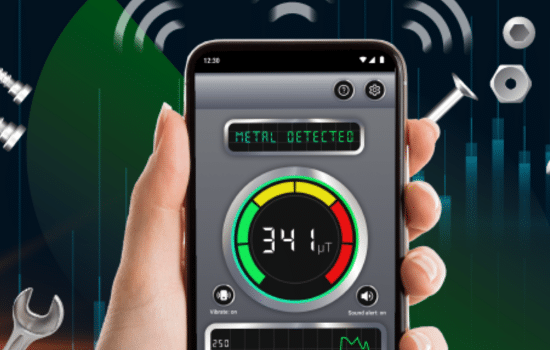Advertisements
At some point, we've all experienced that awkward moment when we accidentally delete a valuable photo from our mobile phone.
Whether it's a picture of a loved one, a snapshot of a special event, or an irreplaceable keepsake from a vacation, the shock of losing those memories can be overwhelming.
Fortunately, modern technology provides us with effective solutions to recover those lost moments.
Nowadays, there are specific applications that allow you to restore deleted photos, giving you back the opportunity to preserve those precious memories.
See Also
- Turn Your Phone Into a Walkie-Talkie
- Easy and Fast Anime Streaming
- Learn to Drive with Apps
- Learn Piano Quickly and Easily
- Take Care of Your Heart with These Apps
Why Use Apps to Recover Deleted Photos?
1. Emotional Relief
Recovering a photo that has significant emotional meaning, such as a picture of a loved one or a special event, can bring great relief.
These memories are not just images; they are fragments of our lives that represent unique moments that we wish to preserve forever.
Advertisements
2. Economic and Accessible Solutions
In the past, recovering deleted files required advanced technical knowledge or expensive professional services.
Now, with the advancement of technology, there are various applications accessible to all users, many of which offer free features or low-cost plans.
3. Fast and Convenient
Advertisements
Thanks to these tools, the photo recovery process becomes much faster and easier. You no longer have to be a tech expert to try and restore those lost photos.
In a matter of minutes, you can get the process up and running and increase your chances of success.
Most Efficient Apps to Recover Deleted Photos
DiskDigger Photo Recovery
DiskDigger Photo Recovery It is one of the most popular applications for recovering deleted photos.
Its advanced technology allows you to scan both your device's internal memory and SD cards, searching for recently deleted files.
Main Features:
- Ability to recover photos from internal memory and SD cards.
- Possibility to save recovered files to the cloud or to the device.
- User-friendly design, ideal for beginners.
Benefits:
- Quick and direct method to restore photos.
- The free version offers basic features that cover the needs of most users.
Dr.Fone – Data Recovery
Dr.Fone is a more complete and advanced tool, which not only allows you to recover photos, but also other types of files, such as deleted videos, contacts and messages. This application is available for both Android and iOS devices.
Main Features:
- Compatible with Android and iOS devices.
- It offers a deep scan to increase the chances of recovering files.
- Easy to understand interface and support for multiple languages.
Benefits:
- Ideal for those users who need to recover different types of files.
- Contains advanced tools, useful for users with additional technical knowledge.
Dumpster
Dumpster acts as a virtual recycle bin on your device. When you accidentally delete files, this app stores them temporarily for easy restoration.
Main Features:
- Stores deleted photos, videos and other files.
- Simple one-click restore.
- Cloud backup features.
Benefits:
- Ideal for preventing permanent file loss.
- Minimizes the risk of future accidental deletion.
The Importance of Recovering Your Lost Memories
Photos of Loved Ones
The photos we often accidentally delete often have deep emotional value.
These images can be portraits of relatives who are no longer with us, photos of close friends, or moments from our childhood that we don't want to lose. Recovering them means keeping an important part of our personal history alive.
Memories of Travel and Celebrations
Photos of special moments like trips, weddings or birthday celebrations represent experiences that cannot be recreated.
Losing them can create a feeling of emptiness, as if we are losing a part of those unique memories. Luckily, photo recovery apps give us a second chance to relive those meaningful moments.
Tips to Maximize Recovery Chances
1. Act immediately
Time plays a crucial role when it comes to recovering deleted files. The faster you use a recovery application, the higher the chances of success. If you let too much time pass, the files may be overwritten by other data.
2. Avoid Overwriting Data
When you delete a file, the data is not immediately removed from storage, but remains there until it is overwritten by new files.
To maximize your chances of recovery, avoid installing new apps or saving new files to your device before attempting to restore your photos.
3. Use Backups
While photo recovery apps are effective, the best strategy is prevention. Set up cloud backup services, such as Google Photos or iCloud, to have your photos backed up automatically. This will give you an extra layer of protection in case of data loss.
How to Choose the Right Recovery Application?
Choosing the right app will depend on your particular needs. Here are some recommendations:
- If you are looking for simplicity: DiskDigger is the most suitable option.
- If you need to recover multiple types of files: Dr.Fone is the best tool.
- If you prefer to prevent future losses: Dumpster will help you manage your deleted files efficiently.
Real Cases of Photo Recovery
Anna's Story
Ana accidentally deleted the photos of her sister's wedding, an extremely important event for her. Thanks to Dr.Fone, was able to restore most of the images and share them with his family, reliving that special day.
Carlos's Experience
Carlos, an amateur photographer, accidentally deleted several pictures from his trip to Europe after formatting his SD card by mistake. Using DiskDigger, was able to recover the photos and preserve the memories of his trip.
Lesson Learned by Sofia
After losing several important family photos, Sofia downloaded DumpsterSince then, you have been avoiding accidental file loss by using this app, which temporarily saves deleted files before they are permanently erased.
Alternatives to Protect Your Photos in the Future
In addition to using recovery apps, you can also implement some strategies to protect your photos and other important files:
- Cloud Storage Services: Platforms like Google Drive, Dropbox and OneDrive allow you to automatically save copies of your photos, ensuring that you always have a backup available.
- External Storage Devices: Use external hard drives or USB flash drives to store physical backups of your images.
- Organization Apps: Tools like Photoscape either Adobe Lightroom They not only allow you to organize your photos, but also back up your files more efficiently.
Deleted Photo Recovery Tools
There are various options available, but DiskDigger, Dr.Fone and Dumpster stand out among the best to help you recover deleted photos easily and effectively.
Each of these applications offers unique features that can be tailored to your specific needs, whether for a quick fix, a more advanced restoration, or proactive protection against file loss.

Conclusion
Losing important photos can be an emotionally difficult experience, but today there are practical and effective tools such as DiskDigger Photo Recovery, Dr.Fone and Dumpster offering quick and easy solutions.
These apps are designed to be easy to use, even for non-technical people, and can help you restore those precious photos with just a few clicks.
Remember to act quickly, avoid overwriting data, and use automatic backups as a precaution. With these apps and tips, you can make sure your most precious memories stay protected, even if something goes wrong.




